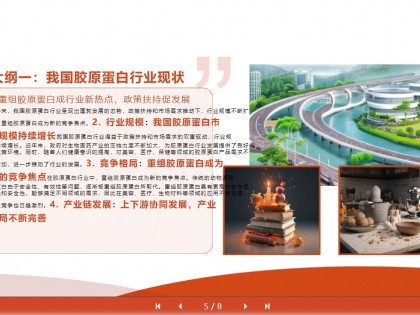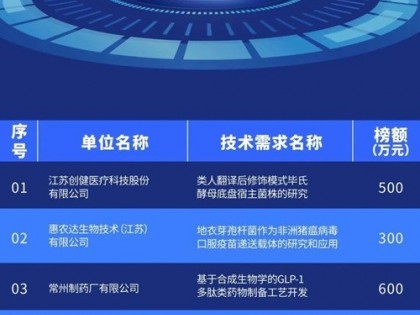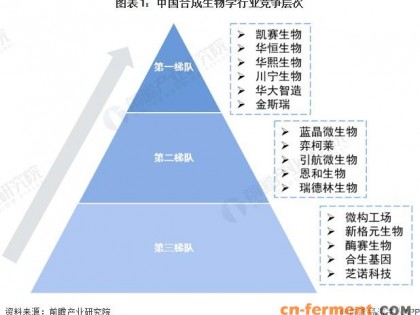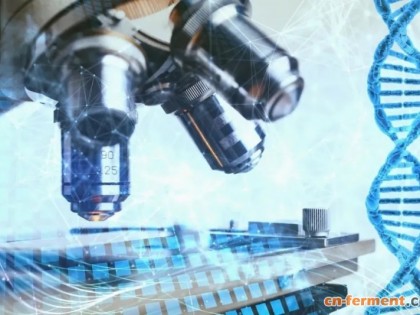2. 食品安全与营养协同创新中心,江苏 无锡 214122;
3. 江南大学 糖化学与生物技术教育部重点实验室,江苏 无锡 214122;
4. 江南大学 粮食发酵工艺与技术国家工程实验室,江苏 无锡 214122
2. Synergetic Innovation Center of Food Safety and Nutrition, Jiangnan University, Wuxi 214122, Jiangsu, China;
3. Key Laboratory of Carbohydrate Chemistry and Biotechnology, Ministry of Education, Jiangnan University, Wuxi 214122, Jiangsu, China;
4. National Engineering Laboratory for Cereal Fermentation Technology, Jiangnan University, Wuxi 214122, Jiangsu, China
葡萄糖二酸 (Glucaric acid,简称GA) 是一种无毒的葡萄糖衍生物,天然存在于葡萄柚、苹果、橘子等水果和十字花科蔬菜中,在少量哺乳动物及人体内也有分泌[1]。早在1964年,就有学者提出补充糖醛酸类物质,可能有利于提高人体的自然防御机制,有助于消除致癌物质,减少癌症病发的风险[2]。随着研究的深入,葡萄糖二酸及其衍生物——葡萄糖二酸1,4-内酯 (DSL) 因其在降低胆固醇、调控人体内激素水平等方面发挥的作用逐渐受到医学界的重视。补充葡萄糖二酸及其衍生物将有可能成为预防和辅助治疗癌症的新对策。葡萄糖二酸在化工领域也有广泛的应用价值。如可作为聚合物合成的基本单元合成聚酰胺类、羟基化的尼龙 (PHPAs) 及聚二甲基硅氧烷 (BDMS) 聚酰胺[3, 4, 5],合成生物可降解聚合物、缓释肥料、各种薄膜等[6, 7],也可作为原料生产无毒、可生物降解的磷酸盐替代物[8],用于家用洗涤剂、防腐剂和混凝土外加剂等。葡萄糖二酸还可在电镀中作为金属防腐的螯合剂[9]。2004年,葡萄糖二酸被美国能源部 (DOE) 确定为12种“最具有价值的生物炼制产品” (Top value added chemicalsfrom biomass) 之一,它作为合成多种高效环保的新兴生物质能源的原料,具有巨大的潜在经济价值[10]。
1 葡萄糖二酸简介葡萄糖二酸是含有4个手性碳原子的化合物,通常以手性化合物D-葡萄糖二酸的形式存在,在水溶液中会自发氧化,形成单内酯D-葡萄糖二酸-1,4内酯和D-葡萄糖二酸-3,6内酯以及少量的双内酯D-葡萄糖二酸-1,4;3,6-内酯。在水溶液中,葡萄糖二酸以上述4种化合物形式共同存在[11]。20世纪六七十年代,就有研究者从樱桃、柑橘等水果和豆类等蔬菜及落叶松等裸子植物的针叶中检测到葡萄糖二酸的存在[12, 13],在葡萄和柑橘类水果中含量相对较高 (3-4 g/kg),但在果蔬中的总体含量很低 (约1 g/kg)[14]。
1.1 葡萄糖二酸的应用近20年来,人们对葡萄糖二酸在人体内的代谢功能做了较为细致的研究。在哺乳动物体内,葡萄糖二酸和葡萄糖二酸-1,4-内酯是糖醛酸途径的终产物,它们能够有效抑制β-葡萄糖醛酸酶 (β-glucuronidase,简称βG) 的活性。肠道中的β-葡萄糖醛酸酶可催化葡萄糖醛酸与内外源毒素、胆红素等物质结合,将致癌物前体转化为致癌物,并在胆结石形成过程中起重要作用[15]。D-葡萄糖二酸及其衍生物可通过参与人体代谢活动调节体内激素环境 (降低类固醇和部分非类固醇如泌乳刺激素含量) 发挥化学防癌作用,预防和有效抑制如食道癌、结肠癌、激素依赖性癌症乳腺癌、肝癌、皮肤癌和膀胱癌等病症[16, 17, 18, 19, 20, 21],并具有降低胆固醇、治疗糖尿病等作用[1, 22]。最近有研究表明葡萄糖二酸可以降低β-葡萄糖醛酸酶活性,辅助降低雌激素 (葡萄糖醛酸化雌二酮Glucuronidated estradiol) 负担[23, 24],从而降低患乳腺癌的风险。虽然动物实验结果支持这一可能性,但目前还没有评估D-葡萄糖二酸营养补充剂是否对乳腺癌有治疗或预防效果的临床试验结果。另外,与葡萄糖二酸可相互转化的葡萄糖二酸-1,4-内酯有很强的解毒和抗氧化性能[25, 26, 27],它可以抑制胰岛β细胞凋亡减轻四氧嘧啶 (ALX) 诱导的糖尿病[28],缓解盐酸伊立替康 (CPT-11) 引起的肠道黏膜损伤[29]。研究表明,每千克体重摄入4.5 mmol葡萄糖二酸钙对β-葡糖苷酸酶能发挥较明显的抑制作用。由于果蔬中葡萄糖二酸含量微少,通过饮食摄入的葡萄糖二酸含量远低于可对β-葡糖苷酸酶起抑制作用的水平,因此机体需要额外摄入D-葡萄糖二酸及相关的衍生物来达到预防和治疗疾病的效果[14]。
1.2 葡萄糖二酸的市场需求葡萄糖二酸有较广泛的应用,随着医药领域的深入研究,添加D-葡萄糖二酸钙的强化奶粉和乳制品已用于商业化生产,医药制剂也正在开发阶段[30]。1998年,世界范围内的葡萄糖二酸消耗量已达到4.1万t[31]。美国Rivertop Renewables公司经过多年研究率先于2012年将从葡萄糖转化葡萄糖二酸的生产由实验室规模扩大到工业生产规模,达到了单批次生产385.5 kg的规模。近期,英国Johnson Matthey Davy技术公司与美国Rennovia公司也在联合开发生产葡萄糖二酸和己二酸[32]。
2 葡萄糖二酸的测定 2.1 高效液相色谱法高效液相色谱法 (HPLC法) 是目前检测葡萄糖二酸较常见的方法,具有样品处理简便、定量精确的特点。测定采用有机酸的检测方法,使用极性反相色谱柱分离样品,用酸性流动相以防止有机酸解离 (表1)。通常情况下葡萄糖二酸在色谱柱上有较好的保留,并呈现出对称的峰形。但本课题组在研究中发现,葡萄糖酸和葡萄糖二酸在HPLC法分离条件下的出峰时间相近,在色谱图上呈现出一个峰。因此,用HPLC法不能将二者完全分离,进而无法进行准确定量和分析。如果被检测样品中同时含有葡萄糖二酸和葡萄糖酸,通常需要对样品进行预处理。如利用H+型树脂先吸附杂质盐类[33],再利用硼酸凝胶(Bio-Rad公司) 去除杂酸和其他杂质。硼酸凝胶中的硼酸酯基团因具有可亲和吸附共平面顺式二羟基的特性[34],能够有效区分是否存在顺式二羟基的物质,因而它可与葡萄糖二酸特异性紧密结合。用磷酸盐缓冲液可洗去未结合的杂酸 (葡萄糖酸、抗坏血酸等),最后用盐酸洗脱获得葡萄糖二酸,达到去除干扰测定杂质的目的。
| Sample | Column | Flow | Temperature (°C) | Wavelength (nm) | References |
| Grapefruit juice | Synergi Hydro-RP column (250 mm×4.6 mm) | 0.1% (V/V) phosphate | N.A. | 210 | [33] |
| Products of glucose oxidation | Aminex HPX-87H | 5 mmol/L H2SO4 | N.A. | 210 | [35] |
| Bacterial culture | Aminex HPX-87H | 5 mmol/L H2SO4 | 55 | 210 | [36] |
| Kombucha | SB-AQ | Phosphate | 30 | 210 | [37] |
| *N.A.: not available | |||||
离子色谱检测法是一种新型的检测葡萄糖二酸的手段。其分离原理是被检测物质经过携带相反电荷的色谱柱分离,再由电化学检测器或电导检测仪通过电信号的强度进行检测。该方法具有简单快速、灵敏度高、结果准确等优点,在有机酸的检测方面有较大优势[38]。用离子色谱法分析葡萄糖硝酸氧化的副产物,一些用HPLC法难以分离的葡萄糖酸、葡萄糖二酸与葡萄糖醛酸等葡萄糖酸衍生物分离度大大提高。
本研究室在前期的研究中,对HPLC法与离子色谱法的检测效果进行了比较。运用离子色谱检测葡萄糖二酸,以NaOH作为淋洗液梯度洗脱,可将葡萄糖酸和葡萄糖二酸完全分离并精确定量。
此外,也可运用反相离子对液相色谱测定法测定糖类物质[39]。通过加入离子对试剂四丁基硫酸氢铵与被测离子形成中性的离子对化合物,被检测物质在非极性固定相中溶解度增大,分离效果得到显著提高。
2.3 其他检测方法咔唑比色法和葡萄糖酸脱氢酶反应法是早期使用的测定尿液中葡萄糖二酸的方法[40, 41]。但由于吸光度的检测易受到抗坏血酸等内源性物质的干扰,酶反应过程易受到酶纯度的影响,无法精准对葡萄糖二酸进行定量分析[42]。
液相和质谱联用能够鉴定含葡萄糖二酸的物质组分,为检测微生物代谢产葡萄糖二酸产物提供了参考依据[43]。气相色谱-质谱 (GC-MS) 可以精确定量D-葡萄糖二酸的衍生物以及葡萄糖醛酸途径的其他代谢产物,但样品衍生化处理步骤复杂且未被临床和毒理学实验室广泛 使用[44, 45]。
高效毛细管电泳测定 (HPCE) 检测有机酸和葡萄糖二酸-1,4-内酯的方法也已成功建立[46, 47],但同样因设备局限性未能广泛使用。
3 葡萄糖二酸的合成方法 3.1 化学氧化法化学氧化法是目前化工领域制备葡萄糖二酸较为通用的方法。通过氧化D-葡萄糖生产D-葡萄糖二酸。D-葡萄糖氧化过程伴随着D-葡萄糖酸、D-葡萄糖醛酸以及醛糖酸等多种物质的生成 (图1),控制氧化反应的作用位点和反应条件是获得较纯葡萄糖二酸的关键因素。对葡萄糖二酸的原料和氧化剂的筛选试验发现用蒽醌类和金属做催化剂生成产物的选择性差,成本高;用硝酸、二氧化氮、过氧化氢等强氧化剂合成葡萄糖二酸则有产率低,副产物多,需要后续处理等问题。因此,投入高、得率低 (绝大部分小于55%) 是目前化学氧化法生产葡萄糖二酸的主要问题。结合经济效益和产物得率,当前D-葡萄糖二酸的化学氧化法主要以硝酸氧化法和TEMPO氧化法为主。
 |
| 图1 D-葡萄糖氧化产葡萄糖二酸及有机酸副产物[35] Fig.1 Preparation of D-glucose derivatives by oxidation of glucose[35]. |
|
图选项
|
D-葡萄糖二酸的合成制备可追溯到19世纪,采用硝酸氧化葡萄糖的方法[48],将葡萄糖氧化成为葡萄糖二酸及小分子量有机酸,通过控制反应程度得到相应产物。后来研究者在该方法的基础上做出了一些改进。如选用淀粉为原料,用硫酸水解,再加入浓硫酸、硝酸及催化剂MoO3,加热至有氮氧化物气体放出,再缓慢加入硝酸,减少了反应的剧烈程度但葡萄糖二酸的收率仅为40%[49]。或用氧作为终端氧化剂,用加氧加压的方式在计算机控制的密闭反应器中控制反应温度提高了硝酸的利用率并将产率提高到85%[50]。还有学者运用各种类型的生物质作为原料,将氧化反应过程的时间降低到30 min[51]。硝酸氧化法最大的优势在于,硝酸可以既作为溶剂又作为试剂进行反应。不足之处在于,氧化葡萄糖末端羟基和伯醇羟基可以很容易得到葡萄糖二酸,然而氧化α-羟基碳可能会形成5-酮基-葡萄糖酸,氧化造成的C-C键断裂会使产物分解最终形成草酸或碳酸。20世纪中期,硝酸氧化法已扩大到工厂试验的规模[52, 53]。但由于该方法投入高产出低 (得率<50%),有剧烈放热和较多的副反应,并有大量NO和NO2等有害气体排放,对环境造成污染,未能运用于大规模工业化生产。
3.1.2 TEMPO电化学氧化法TEMPO氧化法是指利用2,2,6,6-四甲基-1-哌啶氧自由基 (TEMPO) 介导的电化学氧化葡萄糖合成葡萄糖二酸的方法。TEMPO是20世纪60年代发现的一种亚硝酰自由基,它的氮氧自由基能够在氮氧之间移动形成共振结构。由于它催化的氧化反应无金属参与且反应条件温和,对产物具有选择性并能够限制不可回收的副产物的产生,使之成为碳水化合物合成的理想介导物质[54]。有研究者考察了不同pH、温度和助氧化剂条件下该方法对D-葡萄糖氧化产物的影响,证实了在理想的反应条件下,葡萄糖二酸的得率可以超过85%[55]。
3.2 微生物法生产葡萄糖二酸微生物发酵法是长期以来实现有机酸高效环保生产的常用方法。同化学法相比,微生物发酵法在原料损耗、产品纯度等方面有较大改善,成为一种更优的合成方法。在哺乳动物体内,由葡萄糖正常代谢获得葡萄糖二酸需要经过十步以上反应[1]。目前用微生物发酵法生产葡萄糖二酸的研究尚处于初级阶段,并没有关于微生物存在完整的从葡萄糖到葡萄糖二酸天然合成途径的报道。而人工构建葡萄糖二酸生物合成途径,则主要是通过克隆和表达醛酸脱氢酶[56, 57]实现将葡萄糖醛酸脱氢转化为葡萄糖二酸,或者是在大肠杆菌内构建从葡萄糖到葡萄糖二酸的全合成途径[36]。此外,研究者对糖醛酸途径中与合成葡萄糖二酸的前体葡萄糖醛酸,和酸性条件下能与葡萄糖二酸相互转化的葡萄糖二酸-1,4-内酯也进行了结构和特性上的分析[58, 59]。现阶段,葡萄糖二酸的微生物生产方法主要以合成生物学和红茶菌发酵为代表。麻省理工学院Moon等用合成生物学技术手段对大肠杆菌进行了改造,人工构建了葡萄糖二酸的全合成途径成功地实现葡萄糖二酸的生物合成。采用天然混合菌发酵的方法,可以合成少量的葡萄糖二酸和葡萄糖二酸-1,4-内酯 (表2)。
| Strains | Genes manipulated | Yield (g/L) | Substrate | References |
| E. coli BL21 | Ino1, MIOX, udh | 1.13 | Glucose | [36] |
| E. coli MG1655 | Ino1, MIOX, udh, PtsG | 4.85 | Inositol | [60] |
| E. coli AKC-016 | Ino1, SUHB, MIOX, udh | 73 | Glucose, fed batch glucose | [61] |
| Kombucha | None | 0.008 | Glucose | [54] |
首例微生物合成葡萄糖二酸的菌株是利用合成生物学的方法构建的工程菌Escherichia coli[36]。研究者通过引入3个外源基因——酿酒酵cc母Saccharomyces cerevisiae中的肌醇-1-磷酸合成酶基因 (Ino1),小鼠体内的肌醇氧化酶基因 (MIOX)及丁香假单胞菌Pseudomonas syringae中的醛酸脱氢酶基因 (udh) 进行异源表达,在E. coli中构建了葡萄糖二酸的生物代谢合成途径 (图2)。该途径中,Ino1可使细胞代谢积累肌醇,MIOX催化肌醇转化为葡萄糖醛酸,是关键步骤的限速酶,UDH催化葡萄糖醛酸转化生成葡萄糖二酸。该方法使葡萄糖二酸的产量由毫克级提高到了克级 (1.13 g/L)。随后,Eric等对MIOX基因进行了强化,将以肌醇为底物的葡萄糖二酸的产量提高到4.85 g/L[60]。此外,研究中还发现葡萄糖二酸在以肌醇为底物生产时存在产物限制,葡萄糖二酸的产量无法突破5 g/L,这是提高葡萄糖二酸产量需要继续攻克的问题。在此基础上,Kazunobu等尝试使用多种来源的Ino1、MIOX和UDH构建大肠杆菌葡萄糖二酸全合成途径,添加并强化了肌醇单磷酸酯酶,采用补料发酵策略并控制培养基中葡萄糖水平,使以葡萄糖为底物生产葡萄糖二酸的产量达到了73 g/L[61]。
 |
| 图2 基因改造大肠杆菌合成葡萄糖二酸途径[36] Fig.2 Synthesis pathway of genetically engineered Escherichia coli glucaric acid[36]. |
|
图选项
|
红茶菌是以含有葡萄糖的茶水为原料,经过醋酸菌、酵母菌和乳酸菌等多种微生物的复合体 (菌胶膜) 共同发酵而成的一种酸性饮料。一些学者对红茶菌发酵液中的成分进行了分析,发现其培养液中含有较高含量的葡萄糖二酸-1,4-内酯 (8.6 mg/mL),而在糖醛酸途径中葡萄糖二酸是葡萄糖二酸-1,4-内酯的前体,因而推测红茶菌发酵液中含有较高含量的葡萄糖二酸[58]。由于微生物是否存在糖醛酸途径尚未得到证实,该推断还需进一步验证才可以确认。也有研究者用HPLC/MS/PAD (高效液相色谱/质谱/光电扫描) 的方法对来自美国和世界其他地区的19种红茶菌样品进行了化学成分分析,未检测出葡萄糖二酸和葡萄糖醛酸[62]。由于培养条件、分析方法、菌种来源等差异得到的结果也存在差异,因此红茶菌是否可以以葡萄糖为原料发酵生产葡萄糖二酸还需更多研究加以证实。
4 葡萄糖二酸研究展望葡萄糖二酸作为化工、医药及食品等领域产品中的重要中间体,在降低成本、合成可再生能源和可持续发展等方面有巨大的应用前景和重要的经济潜力。现阶段葡萄糖二酸生产的化学方法日趋成熟,但是国内外都未能形成规模化生产。微生物法生产葡萄糖二酸仍处于研究阶段,还需要对葡萄糖二酸在微生物体内的代谢,对生产菌株的改良等方面进行进一步研究,对如何在发酵过程中提高合成产物的能力、提高发酵生产强度、缩短发酵时间等问题进行发酵优化。注重葡萄糖二酸的抗癌机制和可再生利用的特点对其进行具体而深入的研究将使其应用方面体现出更大的社会价值。
| [1] | Walaszek Z, Szemraj J, Hanausek M, et al. D-glucaric acid content of various fruits and vegetables and cholesterol-lowering effects of dietary D-glucarate in the rat. Nutr Res, 1996, 16(4): 673-681. |
| [2] | Marsh CA. metabolism of D-glucuronolactone in mammalian systems. 2. Conversion of D-glucuronolactone into D-glucaric acid by tissue preparations. Biochem J, 1963, 87(1): 82-90. |
| [3] | Chen L, Kiely DE. D-Glucaric acid esters/lactones used in condensation polymerization to produce hydroxylated nylons-a qualitative equilibrium study in acidic and basic alcohol solutions. J Carbohyd Chem, 1994, 13(4): 585-601. |
| [4] | Smith T, Denton T, Zhang J, et al. Synthesis and characterization of higher molecular weight stereo-random poly (D-glucaramides) from 1: 1 alkylenediammonium D-glucaric acid//234th ACS National Meeting, Boston, MA, United States, 2007. |
| [5] | Henkensmeier D, Abele BC, Candussio A, et al. Synthesis, characterisation and degradability of polyamides derived from aldaric acids and chain end functionalised polydimethylsiloxanes. Polymer, 2004, 45(21): 7053-7059. |
| [6] | Kiely DE. Carbohydrate acid amide plant fertilizers: US, 5478374. 1995-12-26. |
| [7] | Morton DW, Kiely DE. evaluation of the film and adhesive properties of some block copolymer polyhydroxy polyamides from esterified aldaric acids and diamines. J Appl Polym Sci, 2000, 77(14): 3085-3092. |
| [8] | Anonymous. Rivertop begins scaling up of glucaric acid production. Int Sugar J, 2012, 114(1361): 304. |
| [9] | Dijkgraaf PJ, Verkuylen ME, van der Wiele K. Complexation of calcium ions by complexes of glucaric acid and boric acid. Carbohyd Res, 1987, 163(1): 127-131. |
| [10] | Werpy T, Petersen G, Aden A, et al. Top value added chemicals from biomass[R]. Aug 2004, U.S. Department of Energy Washington DC. |
| [11] | Brown JM, Manley-Harris M, Field RJ, et al. An NMR Study of the equilibration of D-glucaric acid with lactone forms in aqueous acid solutions. J Carbohyd Chem, 2007, 26(8/9): 455-467. |
| [12] | Kessler G, Neufeld EF, Feingold DS, et al. metabolism of D-glucuronic acid and D-galacturonic acid by Phaseolus aureus seedlings. J Biol Chem, 1961, 236(2): 308-312. |
| [13] | Dittrich P, Kandler O. Biosynthesis of D-glucaric acid in needles of Larix decidua. Z Pflanzen Physiol, 1972, 66(4): 368-371. |
| [14] | Dwivedi C, Heck WJ, Downie AA, et al. Effect of calcium glucarate on β-glucuronidase activity and glucarate content of certain vegetables and fruits. Biochem Med metab Biol, 1990, 43(2): 83-92. |
| [15] | Marsh C. metabolism of D-glucuronolactone in mammalian systems. 3. Further studies of D-glucuronolactone dehydrogenase of rat liver. Biochem J, 1963, 89(1): 108-114. |
| [16] | Bespalov VG, Aleksandrov VA. Anticarcinogenic effect of potassium salts of glucaric and glucuronic acid in induced models of cervical and esophageal tumors. Vopr Onkol, 2012, 58(4): 537-540. |
| [17] | Dwivedi C, Oredipe OA, Barth RF, et al. Effect of the experimental chemopreventative agent, glucarate, on intestinal carcinogenesis in rats. Carcinogenesis, 1989, 10(8): 1539-1541. |
| [18] | Minton JP, Walaszek Z, Schooley W, et al. β-glucuronidase levels in patients with fibrocystic breast disease. Breast Cancer Res Treat, 1986, 8(3): 217-222. |
| [19] | Oredipe OA, Barth RF, Dwivedi C, et al. Dietary glucarate-mediated inhibition of initiation of diethylnitrosamine-induced hepatocarcinogenesis. Toxicology, 1992, 74(2): 209-222. |
| [20] | Abou-Issa H, Koolemans-Beynen A, Meredith TA, et al. Antitumour synergism between non-toxic dietary combinations of isotretinoin and glucarate. Eur J Cancer, 1992, 28(4): 784-788. |
| [21] | Walaszek Z. Potential use of D-glucaric acid derivatives in cancer prevention. Cancer Lett, 1990, 54(1): 1-8. |
| [22] | Zoltaszek R, Hanausek M, Kilianska ZM, et al. The biological role of D-glucaric acid and its derivatives: potential use in medicine. Postepy Hig Med Dosw, 2008, 62: 451-462. |
| [23] | Heerdt AS, Young CW, Borgen PI. Calcium glucarate as a chemopreventive agent in breast cancer. Isr J Med Sci, 1994, 31(2/3): 101-105. |
| [24] | Abou-Issa H, Moeschberger M, el-Masry W, et al. Relative efficacy of glucarate on the initiation and promotion phases of rat mammary carcinogenesis. Cancer Res, 1995, 15(3): 805-810. |
| [25] | Nakajima M, Irimura T, Nicolson GL. A solid-phase substrate of heparanase: its application to assay of human melanoma for heparan sulfate degradative activity. Anal Biochem, 1986, 157(1): 162-171. |
| [26] | Saluk-Juszczak J. A comparative study of antioxidative activity of calcium-D-glucarate, sodium-D-gluconate and D-glucono-1,4-lactone in a human blood platelet model. Platelets, 2010, 21(8): 632-640. |
| [27] | Wang RC, Neoh TL, Kobayashi T, et al. Antioxidative capacity of the degradation products of glucuronic and galacturonic acid from subcritical water treatment. Chem Eng Technol, 2011, 34(9): 1514-1520. |
| [28] | Bhattacharya S, Manna P, Gachhui R, et al. D-saccharic acid 1,4-lactone protects diabetic rat kidney by ameliorating hyperglycemia-mediated oxidative stress and renal inflammatory cytokines via NF-κB and PKC signaling. Toxicol Appl Pharmacol, 2013, 267(1): 16-29. |
| [29] | Fittkau M, Voigt W, Holzhausen HJ, et al. Saccharic acid 1,4-lactone protects against CPT-11-induced mucosa damage in rats. J Cancer Res Clin Oncol, 2004, 130(7): 388-394. |
| [30] | Edlund U, Albertsson AC. Polyesters based on diacid monomers. Adv Drug Deliv Rev, 2003, 55(4): 585-609. |
| [31] | Jong E, Higson A, Walsh P, et al. Product developments in the bio-based chemicals arena. Biofuel Bioprod Bior, 2012, 6(6): 606-624. |
| [32] | Anonymous. JM Davy and Rennovia partner to develop production technology for biobased glucaric acid and adipic acid. Int Sugar J, 2014, 116(1385): 330-330. |
| [33] | Perez JL, Jayaprakasha G, Yoo KS, et al. Development of a method for the quantification of D-glucaric acid in different varieties of grapefruits by high-performance liquid chromatography and mass spectra. J Chromatogr A, 2008, 1190(1): 394-397. |
| [34] | Poon R, Villeneuve DC, Chu I, et al. HPLC determination of D-glucaric acid in human urine. J Anal Toxicol, 1993, 17(3): 146-150. |
| [35] | Davey CL. Development of an ion chromatography method for the analysis of nitric acid oxidation reactions of common sugars [D]. Hamilton, New Zealand: The University of Waikato, 2008. |
| [36] | Moon TS, Yoon SH, Lanza AM, et al. Production of glucaric acid from a synthetic pathway in recombinant Escherichia coli. Appl Environ Microbiol, 2009, 75(3): 589-595. |
| [37] | Zhang H, Ji BP, Wu W. Analysis of functional factors in Kombucha by reverse phase high performance liquid chromatography. Food Sci Technol, 2012, 37(7): 250-255 (in Chinese). 张红, 籍保平, 吴薇. 高效液相色谱法测定红茶菌中的功能因子. 食品科技, 2012, 37(7): 250-255. |
| [38] | Fischer K, Bipp HP, Bieniek D, et al. Determination of monomeric sugar and carboxylic-acids by ion-exclusion chromatography. J Chromatogr A, 1995, 706(1/2): 361-373. |
| [39] | Zhu X, Yu ZL, Zhou JD, et al. Determination of six organic acids in chemical oxidation process of glucose by ion pair reversed phase HPLC. Chin J Anal Lab, 2013, 32(5): 20-24 (in Chinese). 朱璇, 余作龙, 周佳栋, 等. 反相离子对液相色谱测定葡萄糖化学氧化过程中的6种有机酸. 分析试验室, 2013, 32(5): 20-24. |
| [40] | Bitter T, Muir HM. A modified uronic acid carbazole reaction. Anal Biochem, 1962, 4: 330-334. |
| [41] | Steinberg K, Needham L. A comparison of two methods for quantifying D-glucaric acid. J Anal Toxicol, 1986, 10(4): 139-141. |
| [42] | Marsh CA. An enzymatic determination of D-glucaric acid by conversion to pyruvate. Anal Biochem, 1985, 145(2): 266-272. |
| [43] | Schwaiger S, Seger C, Wiesbauer B, et al. Development of an HPLC-PAD-MS assay for the identification and quantification of major phenolic edelweiss (Leontopodium alpium cass.) constituents. Phytochem Anal, 2006, 17(5): 291-298. |
| [44] | Gangolli SD, Longland RC, Shilling WH. A gas-liquid chromatographic method for the determination of D-glucaric acid in urine. Clin Chim Acta, 1974, 50(2): 237-243. |
| [45] | Lake B, Longland R, Harris RA, et al. The excretion of metabolites of the D-glucuronic acid pathway in human urine. Effect of phenobarbitone administration. Xenobiotica, 1982, 12(4): 241-247. |
| [46] | Barbas C, Garcia JAL, Manero FJG. Separation and identification of organic acids in root exudates of Lupinus luteus by capillary zone electrophoresis. Phytochem Anal, 1999, 10(2): 55-59. |
| [47] | Wang K, Gan XH, Tang XY, et al. Determination of D-saccharic acid-1,4-lactone from brewed Kombucha broth by high-performance capillary electrophoresis. J Chromatogr B, 2010, 878(3/4): 371-374. |
| [48] | Sohst O, Tollens B. Crystallized saccharic acid. Justus Liebigs Annalender Chemie. Berlin: Verlag Chemie, 1888, 245: 1-27. |
| [49] | Diamalt AG. Improvements in the production of saccharic acid and tartaric acid from carbohydrates: UK, 108494. 1920-09-09. |
| [50] | Smith TN, Hash K, Kiely DE, et al. Modifications in the nitric acid oxidation of D-glucose. Carbohydr Res, 2012, 350: 6-13. |
| [51] | Fischer K, Bipp HP. Generation of organic acids and monosaccharides by hydrolytic and oxidative transformation of food processing residues. Bioresour Technol, 2005, 96(7): 831-842. |
| [52] | Mustakas GC, Slotter RL, Zipf RL. Potassium acid saccharate by nitric acid oxidation of dextrose. Ind Eng Chem, 1954, 46(3): 427-434. |
| [53] | Mehltretter CL, Rist CE. Sugar oxidation, saccharic and oxalic acids by the nitric acid oxidation of dextrose. J Agric Food Chem, 1953, 12(1): 779-783. |
| [54] | Kochkar H, Lassalle L, Morawietz M, et al. Regioselective oxidation of hydroxyl groups of sugar and its derivatives using silver catalysts mediated by TEMPO and peroxodisulfate in water. J Catal, 2000, 194(2): 343-351. |
| [55] | Ibert M, Fuertès P, Merbouh N, et al. Improved preparative electrochemical oxidation of D-glucose to D-glucaric acid. Electrochimi Acta, 2010, 55(10): 3589-3594. |
| [56] | Yoon SH, Moon TS, Iranpour P, et al. Cloning and charactecrization of uronate dehydrogenases from two Pseudomonads and Agrobacterium tumefaciens strain C58. J Bacteriol, 2009, 191(5): 1565-1573. |
| [57] | Gangl R, Behmüller R, Tenhaken R. Molecular cloning of a novel glucuronokinase/putative pyrophosphorylase from zebrafish acting in an UDP-glucuronic acid salvage pathway. PLoS ONE, 2014, 9(2): e89690. |
| [58] | Wu W. The isolation and identification of microbes from Kombucha and studies on their sugar metabolism [D]. Beijing: China Agricultural University, 2002 (in Chinese). 吴薇. 功能性茶菌饮料的菌种分离鉴定及糖代谢的研究[D]. 北京: 中国农业大学, 2002. |
| [59] | Zheng SX, Wei PL, Huang L, et al. Efficient expression of myo-inositol oxygenase in Escherichia coli and application for conversion of myo-inositol to glucuronic acid. Food Sci Biotechnol, 2014, 23(2): 445-450. |
| [60] | Eric S, Prather KL. Improving D-glucaric acid production from myo-inositol in Escherichia coli by increasing MIOX stability and myo-inositol transport. metab Eng, 2014, 22(2): 22-31. |
| [61] | Kazunobu K, Shinichi I. Method of producing glucaric acid: Japan, 2013125509. 2013-10-01. |
| [62] | Michael RR. Analyses of Kombucha ferments. [EB/OL]. [2014-07-23]. http://www.happyherbalist. com/analysis_of_kombucha.htm. |






